【Alpine Island】
[The intersection of Northeast Asia and Southeast Asia][The Southern Boundary of Sino-Tibetan Culture][The Northern Boundary of South Island Culture][The only intersection point between Sino-Tibetan and Austronesian languages][The place where traditional Chinese culture is preserved]【Chiang Kai-shek retreated to Taiwan and took away three people who represented the roots of Chinese culture】
[Where traditional Chinese characters are preserved][Chinese Martial Arts Reserve][The place where traditional Chinese culture is preserved][Where traditional Chinese characters are preserved][Chinese Culture in Taiwan]【Prosperity of religious activities】
【Huang Ting Academy】
[Advantages and characteristics of traditional Chinese characters]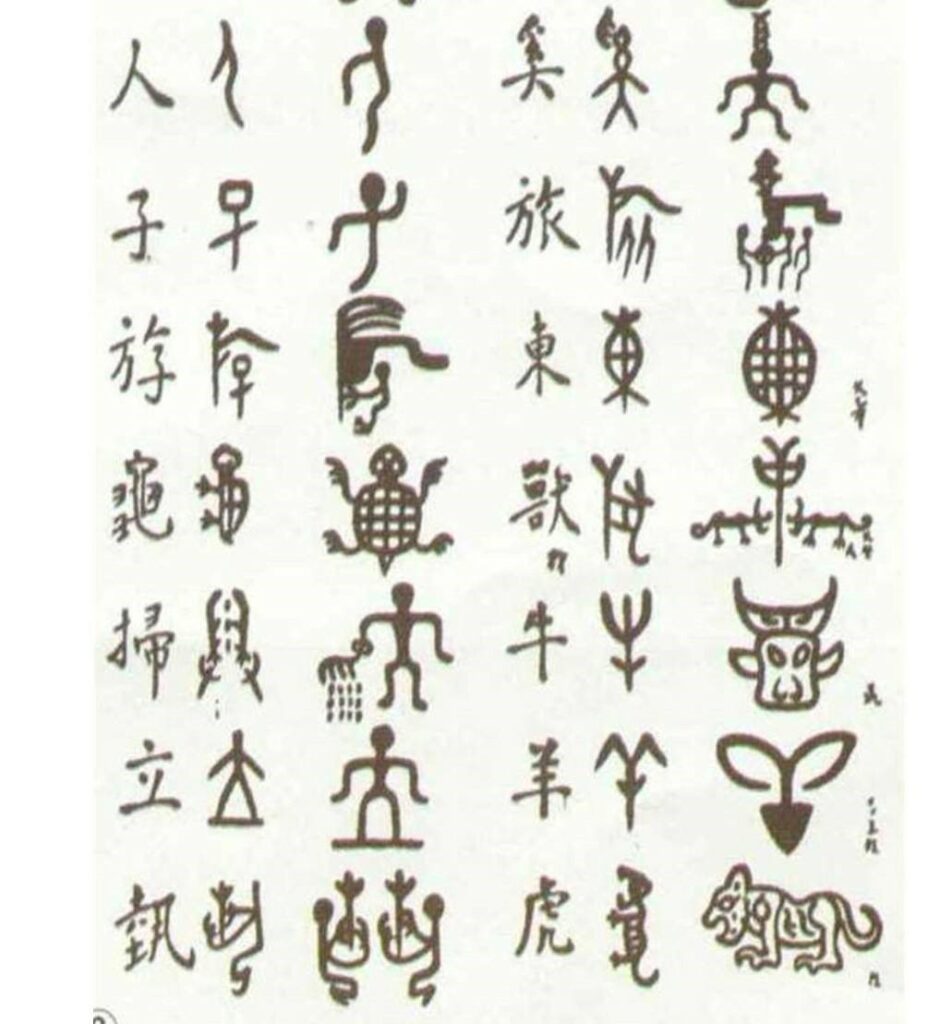
Westerners only have letters, but Chinese characters have rich font variations and literal meanings. Traditional Chinese characters reflect the essence of ancient Chinese culture.

The simplification of Chinese characters not only reduces strokes, but also deletes and merges a large number of original characters, which directly leads to the proliferation of multiple meanings of a word. The glyphs of many characters have nothing to do with the meaning of the characters. The traditional Chinese characters have specific meanings, and the glyphs and meanings are harmonious, beautiful and practical.
Chinese characters before simplification focused on expressive meanings. Each character had its origin, and each character’s meaning had a detailed evolution process, including both pictograms and ideographic meanings. After simplification, the historical origin of the characters is abandoned, and the emphasis is placed directly on simplicity and ease of remembering. The cultural color of the characters is greatly reduced but the usability is greatly increased. Traditional Chinese characters have a strong cultural color and directly represent the characteristics of our Chinese culture.
Advantages and features of traditional Chinese characters:
1. Traditional Chinese characters comply with the Six Books’ character creation principles and establish a complete character creation system, which greatly increases the scientificity and logic of Chinese characters. Many Chinese characters have their own meaning structure, which makes the process of learning Chinese characters a learning method that uses the meaning structure to infer the meaning of the characters. The result is an even better Chinese character system.
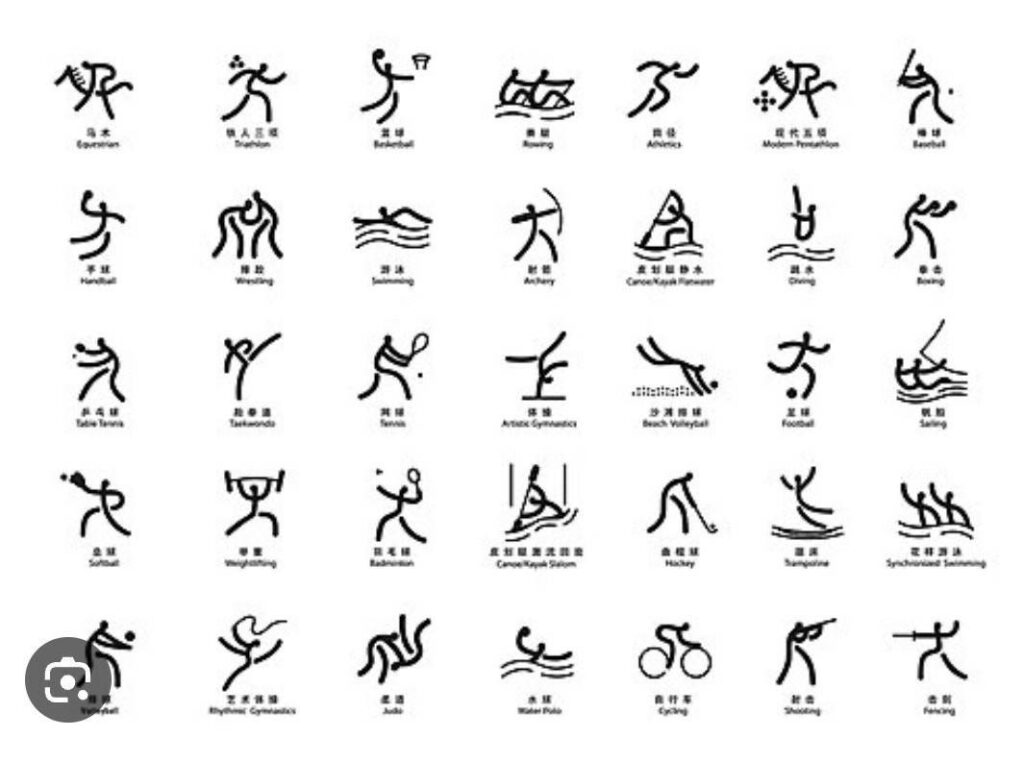
2. Traditional Chinese characters can reflect various dialects or ancient pronunciations, allowing people in some areas to understand them. The relationship between phonetic tone, dialect and ancient pronunciation was connected.
3. In areas such as Hong Kong, Macau, and Taiwan that use traditional Chinese characters, the proportion of illiterate people is far lower than that in mainland China.
4. It is conducive to cultural exchanges between mainland China, Taiwan, Hong Kong and Macao, and is further connected with the Chinese characters used in foreign countries such as Japan.
5. Traditional Chinese characters are conducive to the inheritance of China’s five thousand years of traditional culture. Many modern Chinese people understand traditional Chinese characters and can directly read ancient classics.
6. Traditional Chinese characters have good pronunciation and meaning structure.
7. Traditional Chinese characters are rigorous from the perspective of beautiful calligraphy. At the same time, they have a special aesthetic feeling for calligraphy styles such as seal script and official script.
8. The process of traditionalization has always been carried out in Chinese characters and accounts for a large proportion in the development of Chinese characters. This is mainly a natural development for the practical needs of discerning meaning.
9. Traditional Chinese characters are conducive to reading by fans of Chinese traditional culture. There are some loyal supporters of traditional Chinese characters in China, lovers of ancient literature, and scholars who love history.
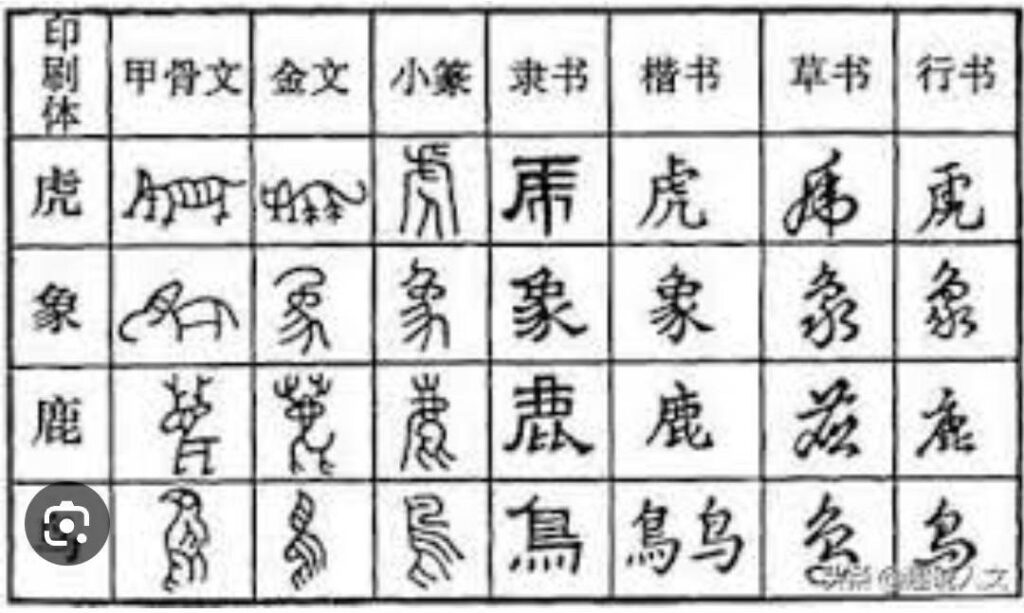
Additional advantages include:
1. Chinese characters are pictographs, and their origin is to derive meaning from the characters. Traditional Chinese characters evolved from Oracle. After more than 2,000 years of use and development, they have become very stable and standardized, with a complete radical system structure. It not only maintains the meaning of the word “look”, but it is also easier to identify than the oracle bone script, small seal script, etc.;
2. Simplified Chinese characters are simplified from traditional Chinese characters, but they have lost the meaning of “Looking” characters to a large extent. For example, the simplified Chinese character “horse” and the traditional Chinese character “horse”, obviously the latter is more vivid and pictographic.
3. In terms of reading: Since simplified characters are simplified from traditional characters, basically traditional characters can also be recognized. For example, when I was in the fourth grade of primary school, I had already read the traditional Chinese versions of martial arts novels such as “Seven Swordsmen” and “Three Heroines of the River”. This is not a problem for today’s smarter children. If traditional Chinese characters had been taught at that time, it would not have been a problem.
4. In terms of cognition: Due to simplification, some characteristics of traditional Chinese have been lost. Many simplified characters look similar, which is not conducive to distinction, such as “Chu Wai”, “Yu Qian”, “Ti Xiu”, and they The original traditional characters “chuwai”, “yuqian” and “tixiu” are easier to distinguish. Chinese characters are pictographs and graphic characters, and each Chinese character is a graphic. We all have this experience: when we see two graphics with a small difference, it takes a long time to distinguish them, but when we see two graphics with a large difference, it takes less time to distinguish them. For example, for “Tixiu”, the eyes need to stay a little longer under the wooden character to identify whether it is “Tixiu” or “Ti”, and “Tixiu” is clear at a glance. These are also characters that are often confused by primary school students in Mainland China. Simplified Chinese characters have added many similar characters, which increases the time of the reading process (this is why Master Li Ao once said that “simplified characters are difficult to read, but traditional characters are easy to read”). This makes the process of learning Chinese characters confusing. Therefore, reading traditional Chinese characters is faster.
5. In terms of teaching: For children, there is no difference between the time it takes to recognize “horse” and the time it takes to recognize “horse”. This is the same as when we look at a figure composed of 5 strokes and look at a figure. The recognition and distinction produced when there are graphics composed of 10 strokes are consistent.
6. In terms of writing: Simplified Chinese characters are easier to write than traditional Chinese characters. This was the original purpose of simplifying Chinese characters. However, in the information age, more and more text is entered through computers. For the latter, there is no difference in the time and storage space required to enter simplified and traditional characters.
7. In terms of communication: Traditional Chinese characters and simplified characters only have different font shapes, but the pronunciation is exactly the same. Therefore, people will not have any obstacles when communicating with their mouths and ears.
8. Some people say that if you want to restore traditional Chinese characters, you might as well just restore Oracle. That’s it. Because traditional Chinese characters are standardized characters with a complete radical system structure, characters with the same radicals are both connected and different, which shortens the learning time and process of Chinese characters. Oracle and other writings are all unstandardized writing. Almost every character is different, and the same character is written differently by different people.
9. Similarly, some people advocate further simplifying Chinese characters into Pinyin characters, which is even more undesirable. In this case, the pictographic characteristics of Chinese characters will be completely lost, and only the radicals will remain (look at the Japanese katakana “アイウエオ”), isn’t it simplified in this way? You can see from these simple radicals Can you tell the meaning of the word? Because of this, a large number of Chinese characters are mixed in the current Japanese to make up for it), and even become pinyin.
[Chinese martial arts in Taiwan]In addition to the cultural relics of the Forbidden City, Taiwan also retains a rare cultural heritage, which is Chinese martial arts!
When martial arts was introduced to Taiwan, there were roughly two waves of peaks. The first wave was at the end of the Ming Dynasty and the beginning of the Qing Dynasty. The soldiers and civilians of Fujian and Guangdong followed Zheng Chenggong across the sea to Taiwan, and also brought Chinese martial arts to Taiwan. The martial arts at that time were mainly boxing from the southern part of the mainland, roughly including Shaolin Yida Zun, Er Taizu, Three Walkers (Monkey Fist), Four Arhats, and Five White Cranes. To this day, these martial arts in Taiwan still retain a considerable degree of the legacy of the Ming Dynasty. In a sense, this can be regarded as another kind of “seeking for the wild”.
The peak of the second wave was in 1949. Two million soldiers and civilians retreated to Taiwan with the Kuomintang, and brought many martial arts schools from the mainland to Taiwan. However, this time they mainly focused on boxing skills from the north of the mainland, such as Mantis Boxing, Di Gongquan, Xingyiquan, Baguazhang, Piguazhang, Yanqingquan, etc. Many of this wave of martial arts practitioners who moved to Taiwan were martial arts masters from the “Central Chinese Martial Arts Academy” at that time. They brought vitality to Taiwan’s martial arts scene at that time and had an important impact on the subsequent promotion of martial arts in Taiwan.
Going one step further, Taiwanese scholars say that the development of Taiwanese boxing can be traced back to Zheng Chenggong, a survivor of the Ming Dynasty, who reclaimed Taiwan and used it as a base to fight against the Qing Dynasty and restore the Ming Dynasty. However, after the fall of the Zheng regime, according to historical records, all Han people in Taiwan at that time were returned to their places of origin. Therefore, a more reliable view is that the Qing government allowed Han people to cross Taiwan, and the development of Taiwan’s martial arts really took effect. , but because the descendants of King Ningjing of the Ming Dynasty are still in Taiwan, the theory that the Han people were driven out of Taiwan in the Ming and Zheng Dynasties is not true. During the rule of the Qing Dynasty, the Han ethnic groups that came to Taiwan to develop were mainly Hokkien and Hakka people from Fujian and Guangdong.
During the Japanese rule in Taiwan, the Japanese government strictly prohibited the Han people in Taiwan from learning traditional Chinese martial arts in order to suppress the anti-Japanese movement among Taiwanese people. Therefore, Taiwanese boxing officially declined during this period. However, during the Japanese rule, the Japanese government also developed kendo and judo in Taiwan. After the Nationalist Government moved to Taiwan, it brought a large number of various martial arts from mainland China. At that time, the northern martial arts from China also came to Taiwan to develop, and there are many systems that have been lost in mainland China.
Since the Nationalist Government came to Taiwan, martial arts practitioners who came to Taiwan with the Nationalist Government brought in martial arts systems such as Bajiquan, Mantis Boxing, Tai Chi, Baoding Wrestling, Xingyi Quan and other northern martial arts styles that are also in Taiwan. Inheritance and roots include the teachers of the Central Chinese Martial Arts Center; in addition, martial arts from Japan and South Korea, such as karate, taekwondo, and aikido, were gradually introduced to Taiwan, so the development of martial arts became more diversified, but these are not Taiwan’s unique traditional martial arts. Explore scope.
According to the views of local Taiwanese people: Since the development of so-called Chinese martial arts under the management of the Nationalist Government was led by the martial arts groups that came to Taiwan with the Nationalist Government, the boxing styles that were earlier developed in Taiwan during the Qing Dynasty were relatively I did not see such significant activities; in addition, Taiwanese society was facing a step-by-step transformation at that time. An agricultural society was transformed into an industrial and commercial society, and environmental factors caused the martial arts culture to slowly fade away.
At that time, the northern Chinese martial arts also came to Taiwan and developed, and there are many systems that have been lost in mainland China. This is currently the most distinctive feature of Taiwanese martial arts.
【Tai Chi】
【Yang Style Tai Chi Inheritance】
[Chen Style Tai Chi inheritance]【Yang Style Tai Chi Inheritance】

Heritage:
The school of thought was passed on. Yang Tai Chi’s martial arts skills are inferior to those of Yang Luqian Taiwan Yang Tai Chi martial arts focuses on paying attention to the inheritance of teachers, respecting teachers, adhering to the truth with sincerity, taking martial ethics as behavioral rules, and promoting skillsThe historical mission of Dao Sanji. From the time when Yang Luxian created Tai Chi and established the teaching materials and methods of boxing, knife, sword, and spear, to when Grandmaster Zi He spread it eastward to Taiwan, he did not dare to change the boxing routines easily during the training process, and the inheritance has remained the most complete to this day. Tai Chi martial arts in Taiwan.
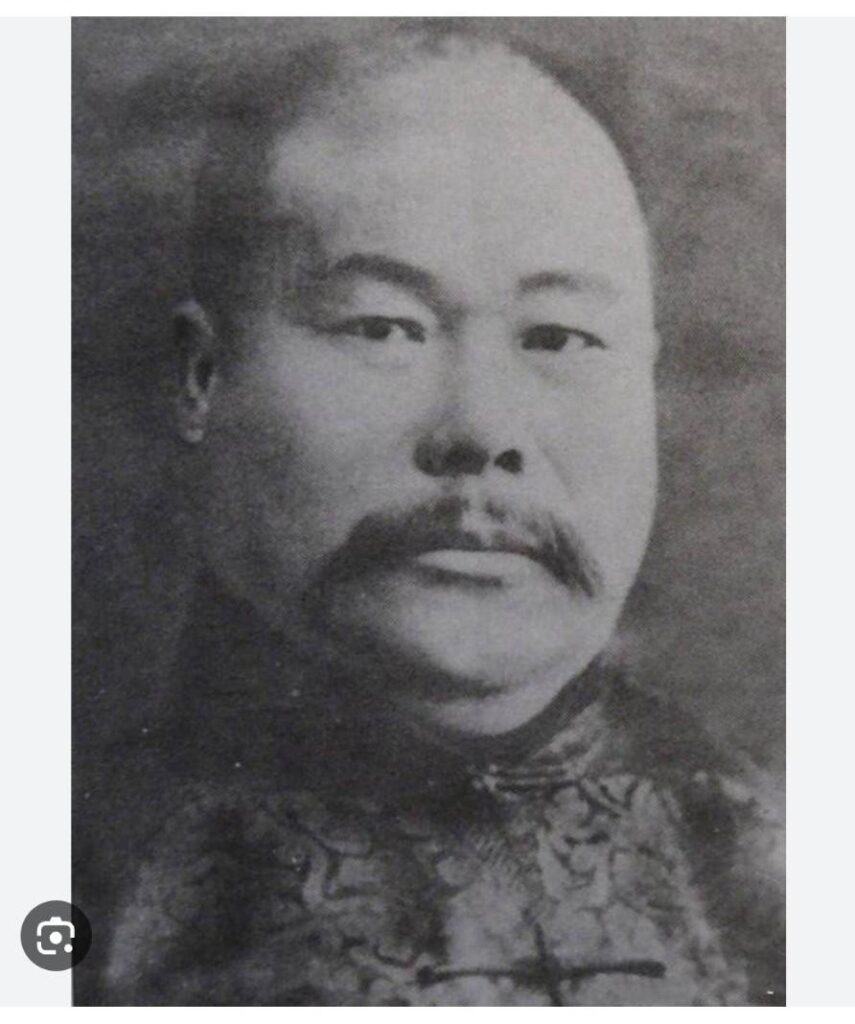
Development system:
Yang Luxian → Yang Jianhou → Yang Chengfu → Lu Dianchen → Wang Zihe (Hua Buting)
; ↓ Association/p> ; Zhang Guozhang (National Taiwan University Military Field)
Li Fengzhang (Peiying Garden)

At this time, Grandmaster Zihe gathered together the ancient and modern collections of authentic Tai Chi martial arts, and at the right time, place, people and various conditions
After gathering together, we finally created a modern scale. Grandmaster Zihe’s cultivation of Tai Chi body and practical skills is the most direct and concrete proof of Tai Chi.
Grandmaster Zihe established “Huabuting”. Over the past forty years, Tao Zhuying has produced countless disciples and masters, and the continuation of the culture of “the style of Chinese bones, the court of Buwu” Gather here. All the disciples of the sect can uphold the ambition of the master. They not only practice diligently day and night, but also spread the teachings widely. The performance of learning and promotion is obvious.
The author includes “Shuyuntai”, “Shiyitang”, “Peiyingyuan” and the martial arts field of National Taiwan University and various colleges and universities. Original teaching features: Grandmaster Zihe summarized the 108 Tai Chi styles of the Yang family into 11 strings and added various detailed movements.
Master Deng Shihai also recorded command music for use in martial arts promotion and teaching. During group boxing, he focused on the command and moved in unison. Over time, he naturally became familiar with the details of the movements. This was a unique move in the boxing world. The instructions are clear and detailed. When practicing boxing with fellow practitioners in the martial arts field, they box every day as if their master is personally guiding them. This is one of the characteristics of our boxing practice. We practice boxing with upright and reverse stances, left-handed swords, right-handed pistols, and two-handed grabs, so that both left and right hands can practice. Promoting the balance of flexibility in all aspects of the body is a necessary training for good health.
Ou Yechao: Established “Shiyitang” and “Cultivation Xiaozhu” to actively promote it at National Central University and various colleges and universities in Taoyuan Zhongli area. Fellow students have achieved unique results in their promotion. “Cultivation Xiaozhu” also promotes the scientific discussion of Yang Tai Chi martial arts, and compiles publications, books and videos such as “Cultivation Tai Chi” and “Taijiquan Miniature” to widely promote it.
Li Fengzhang: The establishment of “Peiying Garden” actively promotes Minglun Ba Duanjin and teaches compact frame in the Nangang area of Taipei. Practitioners in the same discipline have gained considerable benefits.
Zhang Guozhang: I have a unique experience in promoting Yang Tai Chi martial arts in the National Taiwan University martial arts field.
The inheritance place of Yang’s Dajia:
Currently, Taiwan’s heritage is housed in the Taoyuan Longtan Shitang Cultural Villa,
Tai Chi Club of Nuclear Research Institute, Tai Chi Club of Jiaotong University,
The inheritance place of Yang’s Xiaojia:
The Tai Chi Club of the Nuclear Research Institute and the Liangting Terrace at the Shimen Reservoir Middle Line Toll Station
[Chen Style Tai Chi inheritance]Chen Style Tai Chi is one of the five major families of Tai Chi. It originated in Chenjiagou Village, Henan Province, China. It is a form of internal Kung Fu that emphasizes slow, gentle, smooth and smooth movements, integrating softness of the body and steady breathing. , mental concentration and other elements, aiming to improve physical fitness, enhance body stability and maintain physical and mental balance. Chen style Tai Chi includes various forms such as techniques, equipment and push hands, among which Chen style routines are the most famous, with a total of 11 routines, including “Old frame one way”, “Old frame two lines”, “Xinjia one way”, etc. Chen style Tai Chi is favored and loved by more and more people for its unique style, profound techniques and cultivated spirit.
Pan Yongzhou has been sick and weak since childhood, often suffering from headaches, heart palpitations and other problems. When I went to Beijing to study at the School of Law and Business of Peking University, in order to keep fit, I went to the Peking Tai Chi Research Society and started learning Yang Style Tai Chi in the 19th year of the Republic of China (1930 AD). After being introduced by someone, he became a disciple of Liu Musan and studied Wu Style Tai Chi. After being introduced by Liu Musan, in the 20th year of the Republic of China (1931 AD), he became a disciple of Chen Fake, studied Chen Style Tai Chi, and acquired the thirteen postures of the Big Frame (also known as the Old Frame) headgear and two sets of cannon punches.

What Pan Yongzhou inherited was Chen Fake’s old style. His boxing style was soft and restrained. In Taiwan, there are two teachers, Wang Helin and Wang Mengbi, who are both from Chen Fake’s system. However, Pan Yongzhou has more disciples and is more influential than the other two teachers. .
Chen Style Tai Chi is a martial art from Chenjiagou Village in Henan Province. It was first inherited by Chen Wangting, and later passed to Chen Youfa, and further flourished in Taiwan.
Mr. Pan Yongzhou is the tenth generation successor of Chen Style Tai Chi. He learned from Chen Youfa and integrated what he learned into his life. Driven by his love for Tai Chi and his responsible attitude towards inheritance, the inheritance line gradually became clear.
Mr. Pan Yongzhou established several Tai Chi research institutes in Taiwan and actively promoted Chen style Tai Chi. Under the guidance of Master Pan Bingyi, he refined his skills and mastered the skills and essence of Tai Chi. Mr. Pan’s inheritance is not only the inheritance of technology and skills, but also the infusion of Tai Chi philosophy. Mr. Pan Yongzhou regards mutual respect, filial piety, loyalty, justice and other moral qualities as the basic principles of teaching. He attaches great importance to the moral cultivation of his disciples in teaching, hoping that through Tai Chi culture, students can be sublimated in the process of self-cultivation.
Mr. Pan Yongzhou’s Tai Chi inheritance is open. He not only teaches Tai Chi to his disciples, but also opens coaching classes to expand the inheritance and promotion of Chen Style Tai Chi to more people. Such different inheritance methods ensure that The development and inheritance of Chen style Tai Chi in Taiwan.
In general, Mr. Pan Yongzhou’s inheritance of Chen Style Tai Chi in Taiwan is very clear, and his inheritance contains the fruitful achievements of Tai Chi cultural inheritance. This inheritance method has effectively promoted the inheritance of Chen Family Tai Chi, and also allowed more people to come into contact with Tai Chi culture and benefit from it.
The inheritance place of Chen Style Tai Chi:
Taipei City Songhua, Zhulun, Zhangxin Activity Center

Chen Changxing, Master of Chen Style Tai Chi Source: Chen Style Tai Chi Hong Kong Federation
【Sun’s Xingyiquan】
【Sun’s Eight Palms】

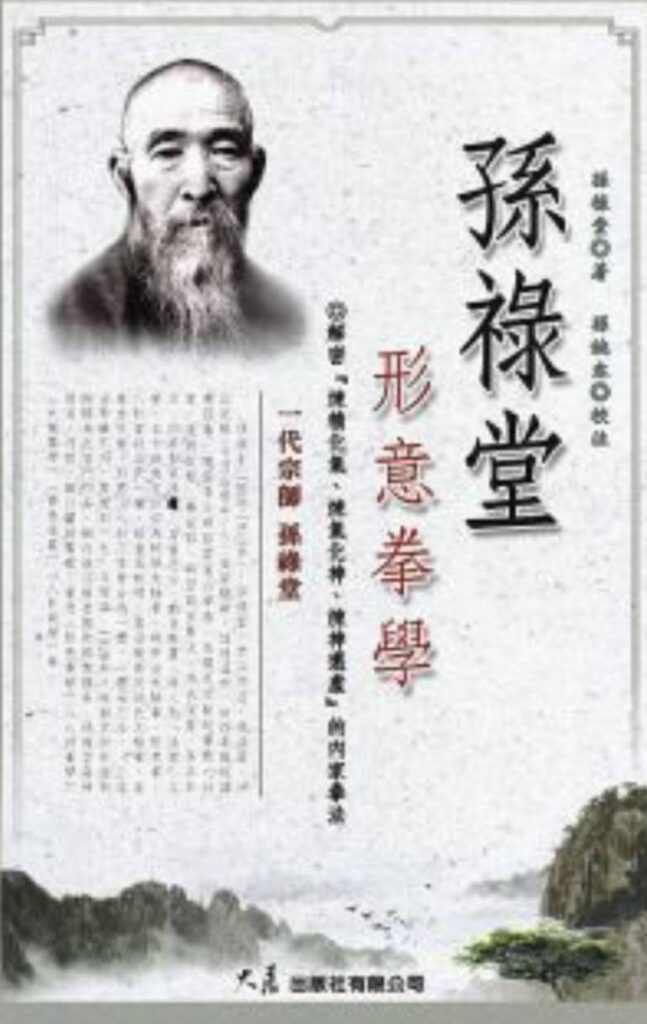
Sun Lutang (1861-1933), whose family was poor when he was young, could not afford to go to school, but he was self-taught and learned both civil and military skills. He successively studied Xingyi Quan from Li Kuiyuan and Guo Yunshen, Bagua Quan from Cheng Tinghua, and Tai Chi from Hao Weizhen. He once traveled to eleven provinces on foot, visiting technical experts and helping the poor. Relying on “Yi” as his martial arts, his calligraphy also improved.
He was granted the imperial title by the seventh-level county magistrate of the Qing Dynasty. When he was young, he was known as the “Sai Huo Monkey”. As an adult, he defeated the Russian martial arts master Petrov and enjoyed the reputation of “the tiger-headed young guard, the best in the world.” In his seventies, he defeated the joint challenge of five Japanese fighting masters in one fell swoop. At that time, major media such as Beijing News, Shenbao, and World Journal all praised Sun Lutang: “He is at the pinnacle of his skills, unparalleled in the world.”
During the Republic of China, he was employed as the Propaganda Officer of the Presidential Office, the deputy director and academic director of the Central Chinese Martial Arts Museum, the Jiangsu Chinese Martial Arts Museum, and the director of the Wudang Clan. Served as chief judge of Zhejiang and Shanghai national martial arts competitions. Most of those who came out on top in the two arena competitions and later the head coaches of the martial arts halls in several major provinces and cities were Sun disciples.
The master devoted his whole life to integrating traditional Chinese culture into boxing, creating the Sun family of internal boxing, and wrote “Xingyi Boxing”, “Bagua Boxing”, “Tai Chi”, “Bagua Swordsmanship” and “Fist Intention to Tell the Truth” 》The five classic boxing books summarized the “three-dimensional theory of Tai Chi’s unity of energy and the neutralization of movement and stillness; and the consistent way of boxing and martial arts thoughts that come from the same source and return to the same destination”, which established the foundation for the sublimation of martial arts to the cultural level. milestone.

The inheritance of Sun Xingyiquan in Taiwan is mainly from the lineage of Zheng Huaixian and He Shunding. The most special thing is that there is also a safe gun practice.
Sun’s Xingyi Tai Chi Bagua is a boxing technique that integrates Baguazhang into Xingyi Quan. It was founded by Mr. Sun Fuquan in the early years of the Republic of China. It was spread to Taiwan in the early 20th century and passed through many masters. The inheritance of Tai Chi has developed into a unique Tai Chi sect in Taiwan, among which Master Zheng Huaixian and He Shunding are the more famous successors. The following is a brief description:

Teachers Zheng Huaixian and He Shunding are both representatives of Sun Xingyi Tai Chi and Bagua in Taiwan. Teacher Zheng Huaixian was once a coach at the Central Police School. Later he began the study of Tai Chi and began to teach Sun Xingyi Tai Chi Bagua. His disciples also include Tai Chi enthusiasts such as Teacher He Shunding.
Teacher Zheng Huaixian is an upright person and is very patient in teaching Tai Chi to his students. The content of his courses is rich and diverse, including courses on basic moves and courses on in-depth discussions of Tai Chi theory, such as guiding nature, relaxing and flexibility, using softness to overcome rigidity, and using Thoughts etc. Mr. He Shunding is a disciple of Master Zheng Huaixian. He is one of the five famous Tai Chi sects in Taiwan. He specializes in Sun Xingyi Tai Chi Bagua Quan and Hengshan Tai Chi.
The two teachers are very strict about the inheritance of Sun’s Xingyi Tai Chi Bagua Quan. They not only focus on Tai Chi techniques, but also pay attention to the inheritance of Tai Chi culture and ideas. They actively promote the Tai Chi movement and have attracted many Tai Chi enthusiasts. admired by the readers.
In short, the inheritance of Sun Style Xingyi Tai Chi Bagua by Master Zheng Huaixian and He Shun Ding in Taiwan attaches great importance to the combination of culture and technology. Their promotion has brought more Tai Chi enthusiasts into contact with this unique Tai Chi sect, and also enriched the Taiwan Tai Chi culture.
The peak of the second wave was in 1949. Two million soldiers and civilians retreated to Taiwan with the Kuomintang, and they brought many martial arts schools from the mainland to Taiwan. However, this time they mainly focused on boxing from the north of the mainland, and Taiwan really did not retain many martial arts schools. Shaobei martial arts.
